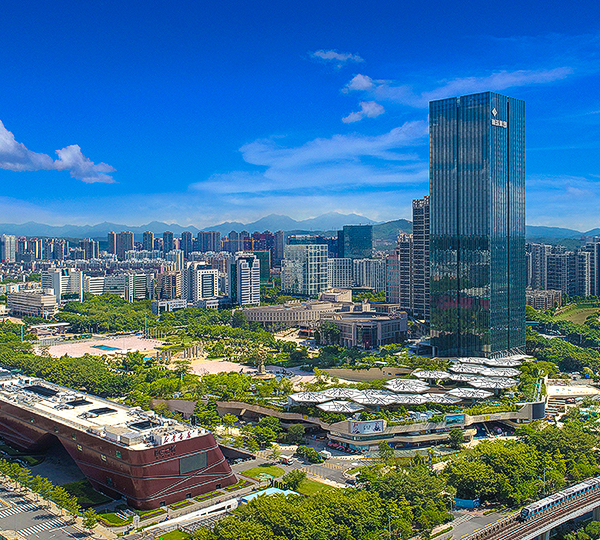

Urban construction
Longgang District covers a total area of 388.21 square kilometres and administers 11 sub-districts and 111 communities. According to the seventh national census, it has a permanent population of 3.979 million, including 1.335 million registered residents and 4.8025 million people under its actual management. It is one of Shenzhen’s largest districts in terms of both population and industrial output.
Regional gross domestic product
In 2024, the district's GDP reached 590.1 billion yuan, marking a year-on-year increase of 6.7%. The added value of industrial enterprises above the designated size grew by 9.4%, ranking first among the top 100 industrial districts in China for seven consecutive years. The district is home to 3,612 national high-tech enterprises and 111 national ‘little giant’ enterprises specialising in niche fields, ranking among the top in the country in terms of innovation capacity.
Development strategy
Longgang District is advancing the "One Core, Two Nuclei, Multiple Support Points" development strategy, concentrating on key areas such as the Banxuegang Science and Technology City, the Dayun Shenzhen-Hong Kong International Science and Education City, and the Baolong Bio-Pharmaceutical Innovation and Development Pilot Zone. Breakthrough progress has been made in emerging industries such as artificial intelligence and low-altitude economy, with the construction of the city's largest low-altitude intelligent integration testing base, the launch of 217 low-altitude flight routes, and annual flight operations exceeding 300,000. With land preparation ranked first in the city for four consecutive years and the establishment of Shenzhen’s first provincial-level industrial park, Longgang's business environment continues to strengthen.
Innovation ecosystem
Longgang District's innovation ecosystem accounts for 15.8% of GDP in terms of total R&D investment, with over 5,800 PCT international patent applications, both ranking first in the city. The district is home to internationally renowned universities such as The Chinese University of Hong Kong, Shenzhen and Shenzhen North-Western Polytechnic University. Twelve projects led by local enterprises and universities have won National Science and Technology Awards. With over 360 innovation platforms, Longgang demonstrates a clear advantage in fostering technological innovation.
Urban development
Longgang District boasts a comprehensive transportation network system, including 110.2 kilometers of operational rail transit system that fully covers 11 sub-districts. Cultural and tourism landmarks such as the Dayun Centre, Dafen Oil Painting Village, and Gankeng Hakka Town have attracted over 20 million visitors from outside the district throughout 2024. Shenzhen International Low-Carbon City has become a national benchmark for low-carbon development, with continuously improving ecological environments. The district has a green coverage rate of 50.52%, with 303 parks and an average per capita park green space area of 13.3 square metres.
Four-Have new city
In the future, Longgang will vigorously advance the "All in AI" strategy and establish a distinctive industrial system of "3+4+N+AI"industrial framework. Leveraging its three pillar industries of "IT+BT+low carbon", the district will focus on emerging sectors such as low-altitude economy, artificial intelligence, and robotics. Plans include the deployment of cutting-edge intelligent infrastructure, such as a 10,000 P computing power pool and a demonstrative zone for embodied robots, to accelerate the application of AI across all industries. Through these efforts, Longgang seeks to evolve into an exemplary modern district distinguished by its vibrancy, abundant business opportunities, livability, and high quality of life. By strengthening its position as Shenzhen's dynamic eastern hub, the district will provide strong momentum for the city's transformation into a globally influential economic powerhouse and a modern international metropolis, while making significant contributions to the advancement of national strategic objectives.
